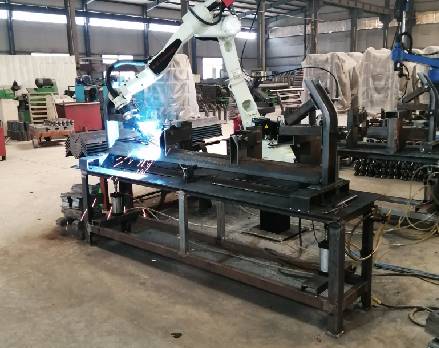 Afrikaans
Afrikaans  Albanian
Albanian  Amharic
Amharic  Arabic
Arabic  Armenian
Armenian  Azerbaijani
Azerbaijani  Basque
Basque  Belarusian
Belarusian  Bengali
Bengali  Bosnian
Bosnian  Bulgarian
Bulgarian  Catalan
Catalan  Cebuano
Cebuano  Corsican
Corsican  Croatian
Croatian  Czech
Czech  Danish
Danish  Dutch
Dutch  English
English  Esperanto
Esperanto  Estonian
Estonian  Finnish
Finnish  French
French  Frisian
Frisian  Galician
Galician  Georgian
Georgian  German
German  Greek
Greek  Gujarati
Gujarati  Haitian Creole
Haitian Creole  hausa
hausa  hawaiian
hawaiian  Hebrew
Hebrew  Hindi
Hindi  Miao
Miao  Hungarian
Hungarian  Icelandic
Icelandic  igbo
igbo  Indonesian
Indonesian  irish
irish  Italian
Italian  Japanese
Japanese  Javanese
Javanese  Kannada
Kannada  kazakh
kazakh  Khmer
Khmer  Rwandese
Rwandese  Korean
Korean  Kurdish
Kurdish  Kyrgyz
Kyrgyz  Lao
Lao  Latin
Latin  Latvian
Latvian  Lithuanian
Lithuanian  Luxembourgish
Luxembourgish  Macedonian
Macedonian  Malgashi
Malgashi  Malay
Malay  Malayalam
Malayalam  Maltese
Maltese  Maori
Maori  Marathi
Marathi  Mongolian
Mongolian  Myanmar
Myanmar  Nepali
Nepali  Norwegian
Norwegian  Norwegian
Norwegian  Occitan
Occitan  Pashto
Pashto  Persian
Persian  Polish
Polish  Portuguese
Portuguese  Punjabi
Punjabi  Romanian
Romanian  Russian
Russian  Samoan
Samoan  Scottish Gaelic
Scottish Gaelic  Serbian
Serbian  Sesotho
Sesotho  Shona
Shona  Sindhi
Sindhi  Sinhala
Sinhala  Slovak
Slovak  Slovenian
Slovenian  Somali
Somali  Spanish
Spanish  Sundanese
Sundanese  Swahili
Swahili  Swedish
Swedish  Tagalog
Tagalog  Tajik
Tajik  Tamil
Tamil  Tatar
Tatar  Telugu
Telugu  Thai
Thai  Turkish
Turkish  Turkmen
Turkmen  Ukrainian
Ukrainian  Urdu
Urdu  Uighur
Uighur  Uzbek
Uzbek  Vietnamese
Vietnamese  Welsh
Welsh  Bantu
Bantu  Yiddish
Yiddish  Yoruba
Yoruba  Zulu
Zulu rollers and idlers
Rollers and Idlers Key Components in Conveyor Systems
In various industries, the efficiency of material transport is vital for streamlined operations. One of the most common mechanisms used for transporting goods is the conveyor system. Critical to the functionality of these systems are rollers and idlers. These components may seem simple, but they play a vital role in ensuring smooth operation, reducing wear and tear on machinery, and enhancing overall productivity.
Understanding Rollers
Rollers are cylindrical components that are integral to conveyor systems. They are designed to support and guide the belt on which materials are transported. Depending on the application, rollers can be made from various materials such as steel, plastic, or rubber. Each material has its own set of properties that make it suitable for particular tasks. For instance, steel rollers are typically used in heavy-duty applications due to their strength and durability, while plastic rollers might be preferred in environments that require corrosion resistance.
Rollers function by allowing the belt to move freely, thus reducing friction and energy consumption. They are usually spaced strategically along the conveyor to ensure optimal support for the belt, so it doesn’t sag, which can lead to inefficiencies. Furthermore, utilizing the correct type of roller can significantly affect the overall performance and lifespan of the conveyor system.
The Role of Idlers
Idlers, on the other hand, are another critical part of conveyance systems. While similar in appearance to rollers, idlers serve a different purpose. They are typically used to support the conveyor belt in non-productive sections, helping maintain its tension and alignment. Idlers can be categorized into various types, including carrying idlers, return idlers, and impact idlers. Each type engages with the belt in distinct ways to maintain its efficiency.
rollers and idlers

Carrying idlers are positioned along the load-carrying sections of the conveyor, while return idlers are located on the section returning to the starting point. Impact idlers, as the name implies, are designed to absorb the shock of the falling materials, preventing damage to the belt and other system components. Proper placement and installation of idlers are crucial for effective conveyor operation, as they influence the belt's trajectory and minimize wear.
Importance of Maintenance
Both rollers and idlers require regular inspection and maintenance. Over time, wear and tear can lead to misalignments, increased friction, and ultimately, conveyor downtime. Conducting routine checks and replacing worn components as necessary can prevent these issues and extend the lifespan of the system.
Additionally, advancements in technology have led to the development of specialized rollers and idlers that can enhance performance further. For example, some modern rollers come equipped with self-lubricating features to reduce maintenance needs and enhance operational longevity.
Conclusion
In summary, rollers and idlers are fundamental to the performance of conveyor systems across various industries. Their roles in guiding, supporting, and maintaining the conveyor belt contribute significantly to the efficiency and effectiveness of material handling processes. By understanding their functionalities and ensuring proper maintenance, businesses can maximize productivity and reduce operational costs. As industries continue to evolve, innovation in rollers and idlers will likely lead to even more sophisticated conveyor systems, further enhancing their significance in material transportation. Thus, investing in high-quality rollers and idlers is not just a matter of necessity; it is a strategic decision that influences the overall success of industrial operations.
-
Revolutionizing Conveyor Reliability with Advanced Rubber Lagging PulleysNewsJul.22,2025
-
Powering Precision and Durability with Expert Manufacturers of Conveyor ComponentsNewsJul.22,2025
-
Optimizing Conveyor Systems with Advanced Conveyor AccessoriesNewsJul.22,2025
-
Maximize Conveyor Efficiency with Quality Conveyor Idler PulleysNewsJul.22,2025
-
Future-Proof Your Conveyor System with High-Performance Polyurethane RollerNewsJul.22,2025
-
Driving Efficiency Forward with Quality Idlers and RollersNewsJul.22,2025





























